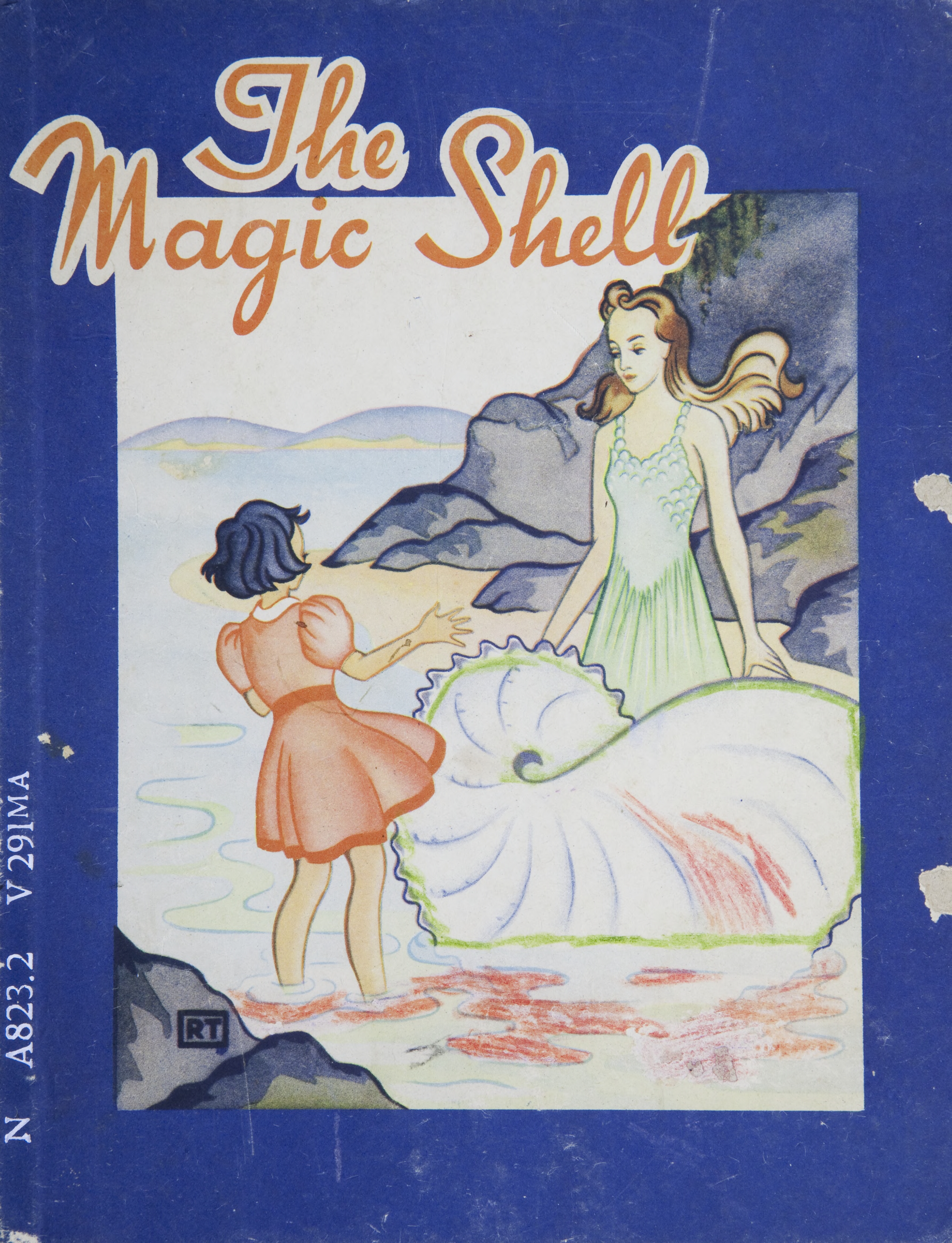Title of the work
Country of the First Edition
Original Language
First Edition Date
First Edition Details
Dorothy Vardon, The Magic Shell. Melbourne and Sydney: Vardon and Sons Ltd for Consolidated Merchandising co., 1949 (NLA estimate), 18 pp. (unnumbered).
Available Onllne
nla.gov.au (accessed: July 11, 2018).
Genre
Fantasy fiction
Mythological fiction
Picture books
Target Audience
Children
Cover

Courtesy of The National Library of Australia.
Author of the Entry:
Margaret Bromley, University of New England, mbromle5@une.edu, brom_ken@bigpond.net.au
Peer-reviewer of the Entry:
Elizabeth Hale, University of New England, ehale@une.edu.au
Elżbieta Olechowska, University of Warsaw, elzbieta.olechowska@gmail.com

Roma Thompson
, b. 1919
(Illustrator)
Roma Thompson, illustrator, was born in 1919, in Mentone, Melbourne, Victoria. Brought up as an only child in a large house on five acres, her parents fostered her appreciation and interest in art. At fifteen she was allowed to leave school and undertake formal fine arts training at the Melbourne Technical College from 1935 to 1939, whilst working from a studio in the loft of her parents’ bushland house. Upon graduation from Melbourne Technical College she worked as a graphic artist and textile designer for several small textile firms in Melbourne. At the time the Australian textile industry was a burgeoning industry that employed artists whose work reflected the Australian environment, often incorporating Aboriginal designs and motifs.
From 1942 to 1950 Thompson attended George Bell’s Thursday Night Life Classes in Melbourne. In 1945 she began exhibiting with the George Bell group and the Melbourne Contemporary Art Society. She married Ronald Centre in 1945 and they had two children. From 1963 she taught tapestry and design at the Caulfield Technical College, Melbourne.
Source:
Profile at the daao.org.au (accessed: February 3, 2018).
Bio prepared by Margaret Bromley, University of New England, mbromle5@une.edu, brom_ken@bigpond.net.au

Dorothy Vardon (Author)
No information found on author Dorothy Vardon. Vardon and Sons Ltd was a printing company in Adelaide, South Australia.
Prepared by Margaret Bromley, University of New England, mbromle5@une.edu, brom_ken@bigpond.net.au
Summary
In this picture book for younger readers, a girl named Judy has been “playing and paddling in the cool sparkling water”, on a yellow sandy beach. A shell is washed up on the shore in front of her. As she listens to the shell, a voice urges her to put it back in the water. It is the voice of Helen who is to become her friend in the ensuing pages. “A fleet of beautiful shells”, with “lovely ladies”, long-haired sea nymphs, Helen, Crystobel, Lurline, Diana, and Rosalind, arrive to celebrate Father Neptune’s birthday.
Father Neptune, the ruler of the sea, is “a big bearded, jolly-looking old gentleman”, holding a sceptre “the emblem of his authority over all the sea”. Father Neptune sings sea chanteys [sic] while the party enjoy a sumptuous picnic of sea foods. After the celebration, Father Neptune hurriedly tows the sea nymphs out to sea before the outgoing tide leaves them stranded. Finally, Judy is left alone on an empty beach, as she was at the beginning of the story. She finds a shell, hoping to hear Helen’s voice. She listens patiently, for she knows that when she returns to the beach another day, she will hear Helen’s voice.
Analysis
The Magic Shell is a fantasy story for young readers that emphasises the playful side of classical mythology, namely the idea of mythical people of the sea, as represented by Neptune and his nymphs. The shell functions as a portal device, calling the mythical people to the child; the circular narrative, in which they retreat with the tide leaving Judy alone, suggests a return from fantasy to an ordered childhood existence.
The Magic Shell is produced on rough paper. The text is printed in blue ink, unusual for Australian children’s books, with five colour illustrations. It was produced at a time of severe paper shortages in Australia, due to the Second World War.
The illustrations are beautifully executed by artist Roma Thompson, depicting Judy, in a short red dress with white collar, white ankle socks and black button shoes. The sea nymphs have flowing long hair and a hint of fish scales on their long dresses. Thompson’s illustrations of Father Neptune’s titian hair and sumptuous red beard belie the description of an “old gentleman”. However, text and illustration are successfully integrated, both telling the one story, depicting the modern young Judy comfortably interacting with characters from Greek mythology.
The beach is an iconic playspace for Australians. For Judy it offers a playspace away from adults and the inner psychic world of her imagination. Her close encounter with ancient Greek characters mythology on the beach, linking the present to the past, suggests that classical mythology is not “high art” but accessible to all.
The prospect of reuniting with the nymph, Helen, offers a sense of hope, a return to order and normality in a time of deep uncertainty. World War II also brought about the end of isolationism and a new embracing of cross-cultural experience which is reflected in children’s literature of the era.
Copyrights
Creator Status: Creator(s) Considered Living
Material type: Literary Dramatic Musical
Published status: Published
Publication date: 1949
Government copyright ownership: No Government Copyright Ownership
Copyright status may not be correct if data in the record is incomplete or inaccurate. For more information regarding Copyright in Library Collections visit copyright.org.au and www.nla.gov.au (accessed: July 11, 2018).
The National Library of Australia supports creativity, innovation and knowledge-exchange but does not endorse any inappropriate or derogatory use. Please respect indigenous cultural and ethical concerns.


